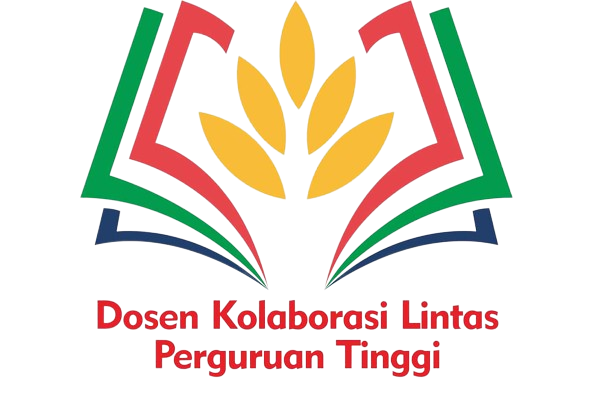COVER JOURNAL
 MAIN MENU
MAIN MENU
TOOLS
ISSN BARCODE
VISITORS
MATRIX JOURNAL
IN COORPORATION WITH




18 authors from Indonesia, Canada, Serbia, and Malaysia contributed to this issue, presenting a rich collection of research that examines sustainable tourism practices, heritage reconstruction, and innovative destination development strategies across diverse contexts. The first article, Sustainable Mangrove Ecotourism Management Model: A Case Study of Berau Regency, East Kalimantan by Tamam Rosid and Ma’rifah Yuliani, develops a framework for managing mangrove ecotourism in Berau, emphasizing ecological preservation, community involvement, and sustainable governance to ensure long-term benefits for both the environment and local stakeholders. The second article, Frequency of Religious Tourist Visits Based on Education Level and Occupation (Case Study at the Tomb of Sheikh Maulana Syamsuddin, Pemalang) by Endro Tri Susdarwono, investigates how socio-demographic factors influence patterns of religious tourism, highlighting the relationship between visitors’ education, occupation, and their engagement in faith-based travel practices. The third article, Rajamangsa Mantyasih: Reconstruction of Royal Cultural Heritage as an Attraction of Gunungsari Tourist Village by Arya Budi Priambodo, Nafrida Imliyatul Faizah, Bernardi S. Dangin, and Cristina Hoyos Perez, explores how royal cultural legacies are reconstructed into tourist attractions. This study underscores the significance of cultural revival, heritage interpretation, and global-local collaboration in transforming historical assets into sustainable village-based tourism experiences. The fourth article, Exploring Visitor Preferences and Market Potential of a Water-Based Glamping Destination: A Case Study of Danau Paisupok, Banggai Kepulauan by Evio Tanti Nanita, Rian Abid Nugroho, and Mhd Try Imran Yasin, examines the growing market appeal of nature-based luxury camping. The research identifies visitor preferences, market segmentation, and potential development strategies to position Danau Paisupok as a competitive eco-luxury destination. The fifth article, Sustainable Tourism Development through Local Wisdom in Pentingsari, Yogyakarta by Emir Faisal Husen, Tasya Komara Sari, and Husen Hutagalung, focuses on the integration of indigenous knowledge and local wisdom into tourism governance. The authors argue that cultural values and community traditions are crucial in shaping resilient tourism models that balance economic growth with cultural preservation. The final article, Minawisata as Integrated Fisheries-Based Tourism: Development Potential in Kampung Madong–Sei Nyirih, Indonesia by Winata Wira, Muzahar Muzahar, Falmi Yandri, Oksep Adhayanto, and Bismar Arianto, introduces the concept of “Minawisata” as a fisheries-based tourism model. The study highlights how integrating aquaculture, local livelihoods, and tourism development can diversify rural economies while promoting sustainable practices in coastal communities.

14 authors from Indonesia, Philippines, Timor Leste, Singapore & Malaysia contributed to a diverse collection of research that investigates the evolving landscape of tourism governance, cultural engagement, and digital marketing in Indonesia’s regional destinations. The first article, Evaluation of Public Service Performance of the Government at the Lingga Regency Tourism Office by Geby Gita Srinita, Wan Jesica Febrianty, and Rizqi Apriani Putri, assesses the effectiveness of government service delivery in the tourism sector of Lingga Regency, identifying key factors that affect performance and proposing administrative improvements to enhance public satisfaction. The second article, Implementation Dynamics of Mangrove Ecotourism Governance in Tanjungpinang Coastal Area: A Grindle-Based Analysis by Siyardi Fatmo, Rumzi Samin, Edy Akhyary, Armauliza Septiawan, and Rudi Subiyakto, applies Grindle’s policy implementation framework to evaluate the institutional and socio-political dynamics in managing coastal mangrove ecotourism, offering insights into the challenges and potential reform strategies in Tanjungpinang. The third article, Walking Tour and Culture: Fostering Cultural Collaboration Through Tourism by Prita Febriani and Islakhul Muttaqin, explores the synergy between walking tours and cultural exchange initiatives as innovative tools for fostering deeper community-based tourism experiences and intercultural collaboration in urban settings. The fourth article, Cultural Narratives in the Development of Traditional Markets as Authentic Tourism Attractions in Yogyakarta by Hisyam Syafii, Nur Khofifah Saadiah, and Rudyn Alaldaya, delves into how traditional market spaces in Yogyakarta are being reimagined as cultural tourism destinations through storytelling, heritage conservation, and local participation. The Five article, An Analysis of the Effectiveness of Social Media as a Promotional Tool for Perlang Tourism Village by Devylia Devylia, examines the strategic use of digital platforms in promoting rural tourism destinations, specifically evaluating how social media influences tourist engagement and destination branding in Perlang Village. Final Article to Narrative Communication of Urban Village Tourism in Yogyakarta for Governing Community Resilience by Yosi Septa Mutiarni and Zhafira Pinasthika to This study aims to explore how the Kali Code community constructs tourism narratives and employs communication strategies to strengthen resilience, combat the stigma of slum living, and preserve local identity.

16 authors from Indonesia, Malaysia, Russia & China contributed to a series of studies that explore various dimensions of tourism development, including sustainable practices, cultural preservation, innovative marketing, and community empowerment. The first article, Power of Local Culture in Regional Tourism Capital Development by Riyono Gede Trisoko, Risna Yanti, and Rahma Putri Andita, examines the critical role of local culture in strengthening tourism capital and fostering regional economic growth. The second article, Implementation of Tourism Village Management Policies Based on Edward III's Theory in Bintan Regency to Achieve Sustainable Tourism by Yeni Yusnita and Raudah Zahra Annabila, highlights the importance of sustainable policy frameworks in ensuring the long-term success of tourism villages in Bintan Regency. In the third article, Designing an Innovative SEO Marketing Plan to Promote Indonesian Tourism Using AI-Driven Tool, Asep Koswara and Siti Marpuah explore the potential of AI-driven SEO tools to enhance the global visibility of Indonesian tourism. The fourth article, Remarkable Journey on Sustainable Tourism Destinations; Case Study on Bintan Resort’s Award Winning on Sustainable Tourism Destination by Eva Amalia and Arina Lutfini Lubis, provides insights into the strategies that helped Bintan Resort achieve recognition as a leading sustainable tourism destination. The fifth article, Branding Strategy for the Tourism Attraction Potential of Pura Pengelukatan Tirta Sudamala Wanagiri Buleleng, authored by Ni Komang Deviana, Misri Misri, I Putu Aditya Prawira Putra, Putu Gede Wirananda Manggala Putra, and Hawita Sapitri, discusses the implementation of effective branding strategies to highlight the cultural and spiritual allure of Pura Pengelukatan Tirta Sudamala Wanagiri in Buleleng. Lastly, the sixth article, Strategy Management for Community Empowerment in the Ekang Anculai Tourism Village by Fitri Kurnianingsih and Lia Muliawaty, explores community empowerment strategies in Ekang Anculai Tourism Village, emphasizing the significance of local involvement in achieving sustainable tourism development.

19 author's countries are coming from Malaysia, Indonesia, Saudi Arabia, Turkiye, Russian & United State. The first article, Implementation of Religious and Cultural Tourism Development Policies in Penyengat Island, by Raja Suhaila and Raja Hamidah Teja Baijuri, explores the strategic implementation of tourism policies aimed at enhancing religious and cultural tourism on Penyengat Island. The study emphasizes the importance of policy frameworks in preserving cultural heritage while promoting tourism. The second article, The Creative Economy for Sustainable Tourism in the Post-Mining Era in Pangkalpinang City, authored by Windy Shelia, Fitria Gusti Estresia, and Wawan Irawan, examines the transition of Pangkalpinang City from a mining-centered economy to one that leverages creative industries for sustainable tourism. The authors discuss the potential of creative economies to drive tourism growth in post-industrial contexts. The third article Evaluating the Potential and Development of Mount Telomoyo as a Sustainable Tourism Attraction in Central Java by Isti Winarni, Lakna Tulas Un, and Ahmed Shbair, provides an in-depth assessment of Mount Telomoyo's potential as a sustainable tourism destination. The authors evaluate environmental, cultural, and economic factors that could contribute to the mountain's tourism appeal. The fourth article Potential for Eco-Enzyme Development as Entrepreneurship in River Ecotourism and Mangrove Conservation written by Dika Putra Wijaya and Nur Laila explores the innovative approach of integrating eco-enzyme production within river ecotourism and mangrove conservation initiatives. The study highlights the entrepreneurial opportunities arising from sustainable practices in these ecotourism sectors. In the fifth article, Evaluation of the Existing Conditions of Lasiana Beach Tourism Destinations and Ecosystems, Kupang City, Jefirstson Richset Riwu Kore, Fellyanus Haba Ora, Moniche Aletha Saubaki, and Herison Richset Riwu Kore analyze the current state of Lasiana Beach, focusing on the environmental and infrastructural challenges that impact its tourism potential. The authors propose strategies for improving the sustainability and attractiveness of this coastal destination. The final article, The Role of Media in Attracting Tourist Interest in Pampang Village by Sri Ayu Rayhaniah, Dhyki Dermawan, Mayang Wulan, Ade Mardiah, and Qorinul Karim, discusses the influence of media in promoting Pampang Village as a cultural tourism destination. The study examines how various media platforms can enhance tourist interest and contribute to the village's tourism development efforts.

17 author's countries are coming from Malaysia, Japan, Indonesia, Australia & United Kingdom. The journal features Seven articles that explore various aspects of tourism development in Indonesia. The first article, "Hexahelix Collaboration in Developing Halal Tourism in Indonesia," discusses the importance of collaboration between stakeholders in developing halal tourism in Indonesia. The authors highlight the potential of halal tourism to attract more foreign tourists to the country. The second article, "Interpolation of Local Potential Parameters in Allocating Village Fund Formulation as an Effort to Development of Local-Based Tourism," examines the allocation of village funds to develop local-based tourism in Indonesia. The author suggests that the interpolation of local potential parameters can help identify the most suitable areas for tourism development. The third article, "Collaboration of Multi-Stakeholder in Integrated Aid Model for Creative MSMEs in the Tourism Sector," focuses on the role of multi-stakeholder collaboration in supporting creative micro, small, and medium-sized enterprises (MSMEs) in the tourism sector. The authors highlight the importance of integrated aid models in promoting sustainable tourism development. The fourth article, "The Interconnection between Technology and Economic through Tourism Sectors," explores the relationship between technology and economic growth through tourism development. The authors suggest that technology can play a significant role in promoting tourism development and improving economic outcomes. The fifth article, "Building City Branding of Yogyakarta as a Cultural City: A YouTube User-Generated Content Analysis," examines the city branding of Yogyakarta as a cultural city. The authors analyze YouTube user-generated content to identify the strengths and weaknesses of Yogyakarta's city branding and provide recommendations for improvement. The Six article, "Salatiga Cassava Tourism Development Strategy," presents a strategy for developing cassava tourism in Salatiga, Indonesia. The author suggests that cassava tourism can be a unique and attractive tourist destination in Indonesia. The final article, "SWOT and PETS analysis in tourism management in Bintan Regency," a SWOT analysis and PETS analysis, tourism management in Bintan Regency can identify opportunities and threats, strengths and weaknesses, positive factors, external factors, tactical factors, and strategic factors that can help inform their decision-making and strategy development.
Indonesian Tourism Journal This work is licensed under
a Creative Commons Attribution-ShareAlike 4.0 International License![]()
Published by:
CV. Austronesia Akademika, Tanjungpinang City. Kepulauan Riau Province. Indonesia
Email: [email protected] | Website: austronesiaakademika.com
